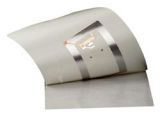It's the year 2010. You're watching your favorite news show to see what's happening in the crazy world of technology. The show is interrupted by commercials. You think this is a good time for a cup of coffee or tea, when suddenly the face of your girlfriend shows up on the screen telling you to buy the latest model of mp3 player with a miniature hard disk of 1.5 TB and a weight of only 20 grams (suitable for any occasion), offered by the Wall-Stone distribution network.
You don't have time to recover from the shock, because the next commercial shows your best friend recommending you the latest car model, personalized according to the wishes described to the car dealer you spoke to about changing your car.
Intrigued, you turn off the TV set, but you forget to disconnect from the Internet. You hear your girlfriend's voice on the speakers of the media center; she reminds you that only the latest latex condoms offer complete protection against unwanted offspring.
Are you hallucinating? Is this a bad scenario of a poor SF movie? No! Welcome to the wonderful world of RFID! (where we know everything about how to serve our favorite customer)
When good inventions are applied wrong
The RFID (radio frequency identification), which is being discussed more and more in the last time (only at CeBIT 2005 at least five presentations on the benefits, implications and methods of applying the technology took place) is not a recent invention as most of you would think.
The technology appeared during the Second World War, when the radar was invented. Initially, the radar, which helped the English win the war, was not able to identify between British and German planes but the introduction of an IFF (identification friend or foe) transmitter allowed the differentiation of the emitted signals.
For almost 50 years, nothing was heard about RFID, until in 1999 MIT started to study the way in which distribution networks could benefit from this technology.
At first, the idea was appealing: the buyer heads for the cash register with his goods, and instead of waiting for the employee to scan the barcode of each product; everything takes place instantaneously, a RFID reader identifying the products after their RFID labels and asking only the credit card for charging and everything because of this wonderful label. Moreover, the retail network can automatically update its stocks, knows the product status and all the necessary details to make a competitive offer and open another five stores.
And everything happens because of the RFID wonder label. At least this how the retailer's and hypermarkets' perfect scenarios sound like. But in reality...
The RFID technology is already among us
The RFID system is based on the identification of each object which has a RFID label attached to it. In order for the label to be identified, a RFID reader, which can be placed in any area, is required. No RFID label is identical to the other, like in the case of barcodes and that is why the first RFID systems were introduced in buildings where high security levels were required. But the technology applies to any object, even moving ones, and that is why it didn't take long for the distribution networks to become interested in.
Unlike barcodes, which are a standard right now, RFID labels have the advantage of containing other data besides the price: the product characteristics, temperature and the date it was moved from one place to another.
Function of the power supply, RFID labels can be passive or active.
RFID labels don't have a power supply of their own and have the following dimensions 0.4 x 0.4 with a thickness less than sheet of paper. When the signal emitted by the RFID reader passes through them, these labels activate and transmit, as a response, the stored information. This response is usually an identification number which the RFID receiver decodes and interprets. Labels can interact within a radius between 10 mm and 5 meters. The active ones have their own power supply to store the data in their memory and can be read or written from great distances. Currently, such a label is about the size of a coin and is functional within a radius of dozens of meters; it has a battery life of a few years.
The active ones, because of their characteristics are too expensive and the distributors prefer the passive ones. Currently, the passive ones also have a high price, one label costing 40 cents. In approximately two years, experts estimate the price will reach 5 cents, but even so, the price is too big for the retail sector.
So, until 6-8 years pass (during which Gartner and Forrester estimate the price will reach 1 cent), the RFID technology won't be applied on a large scale, only as experiments for big retail companies like Metro or Wal Mart.
The price is not the only problem in adopting the technology. Depending on the radio frequency, there are four types of labels: Low frequency (between 125 and 134 kilohertz), High frequency (13.6 megahertz), UHF labels (868 to 956 megahertz) and microwave labels (2.54 GHz).
Regarding frequencies, there is no global standard to regulate the matter in all the countries, every country being allowed to choose any type of RFID label.
Privacy is a domain of the past
The problems started to appear when a group of human right activists began to wonder: "What if every product, from a candy bar to cars, has a unique identification code which can be known by any RFID reader? Won't the distributor be able to find out what clothes does the customer wear, where did he buy them and how long does he have them?"
And if that customer paid with a credit card, then finding the details, profile him or personalizing commercials for him can be a piece of cake.
The scenario where every customer sees personalized commercials on smart displays which identify him by the label on the shoes, (remember Minority Report ?), is no more than three years away.
The answer given by retail companies is that when paying with the credit card you divulge anyway a series of personal information; it's unlikely that everybody with a RFID reader could find out how much did your clothes cost, where did you buy them, what do you eat and so on. We are proposed with a society where, ideally, everybody knows everything about everybody or where a small group of people knows everything about everyone else, a sort of planetary Big brother.
Experiments carried out by Wal Mart, Gillette or Metro showed that consumers are not ready to give up on their privacy in exchange of a shorter time spent at the cash registers. In Germany, the protests of the group FoeBuD towards Metro's initiative to introduce RFID labels were so strong that Metro cancelled the project. Since the tickets to the next football championship will contain a RFID chip, the Foebud group is holding its position.
Wal Mart didn't give up and announced all its partners that they have to place RFID labels on their products.
The second answer the supporters of this technology give is that RFID labels can be removed and everything can be solved by letting the consumer know that the product he bought contains such a label. But most of times, removing the label from a product can lead to the damaging of the product.
Another solution can be the encrypting of the IDs so that they can be read and decrypted only by the producer of the labels. But this doesn't solve the problem of the customer's privacy towards distributors who are not willing to give up the gold mine represented by the data gathered from the customer.
Still, with all the opposition, expenses for the implementation of the RFID will amount until 2008 to 3 billion dollars.
Another solution may come from organizations like FoeBuD, who developed a RFID detector which doesn't allow the RFID readers to read the data from the labels. RSA proposed a scrambling device which emits a signal that masks the rest of the RFID labels. Hence, there are solutions, but neither of them is comfortable.
Let's get one thing straight?RFID is an interesting technology and can have many uses, but until the aspects related to privacy are not regulated by an extremely coherent legislation, RFID is not an alternative to barcodes.
Even so, not even the most efficient legislation can protect us from abuses. So, RFID's future is still uncertain.
How may of us are willing to give up on their privacy to shorter shopping time? The answer will be found out by the companies who ride the wave of RFID enthusiasm!

 14 DAY TRIAL //
14 DAY TRIAL // 


